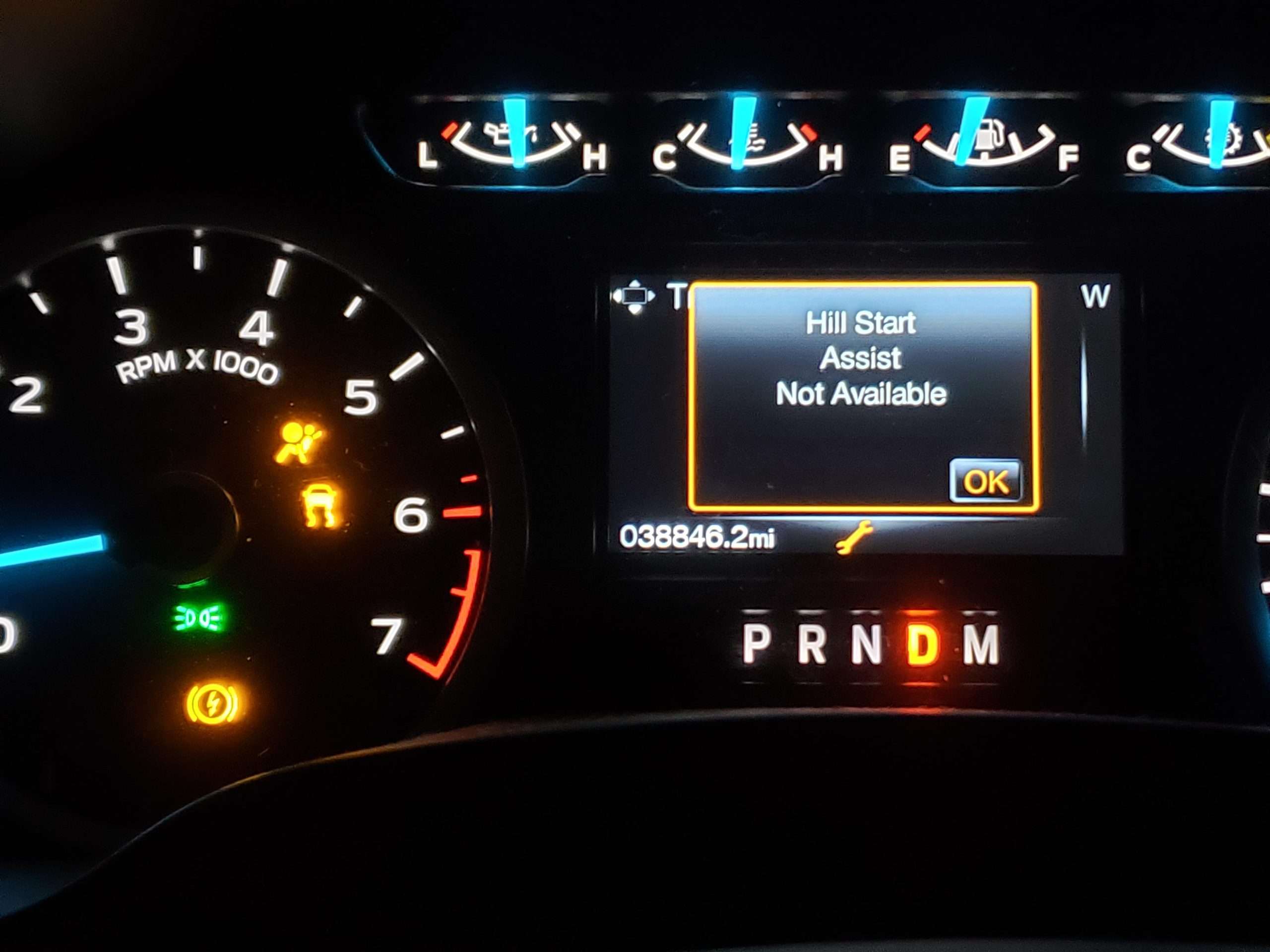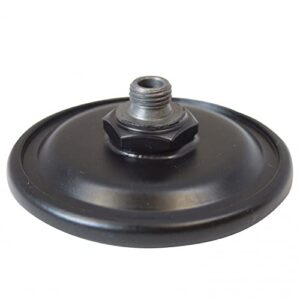A Ford F150 may go into limp mode due to issues with the transmission, engine, or sensors. These problems can trigger the vehicle’s computer to limit its performance to prevent further damage.
When a Ford F150 goes into limp mode, it can be frustrating and potentially dangerous. Common causes include low fluid levels, faulty transmission solenoids, or a malfunctioning throttle position sensor.
By understanding the possible triggers for limp mode, drivers can take appropriate action to avoid potential issues on the road.
Proper maintenance and timely diagnostics can help prevent these problems from occurring, ensuring a smoother driving experience and avoiding costly repairs in the long run.
In the following sections, we will explore the symptoms, causes, and potential solutions for a Ford F150 going into limp mode.
What Is Limp Mode In Ford F150?
Limp mode, also known as limp home mode, is a safety feature in modern vehicles, including the Ford F150, designed to protect the engine and transmission from potential damage.
When the vehicle’s onboard computer detects a problem that could cause harm to the engine or transmission, it restricts the vehicle’s performance, allowing the driver to safely reach a service center without causing further damage.

Definition Of Limp Mode In Automotive Industry
Limp mode is an operational mode that vehicles enter when a critical system malfunction is detected by the vehicle’s onboard computer.
It is a safety feature designed to protect the engine and transmission from potential damage by restricting the vehicle’s performance.
Effects Of Limp Mode On Ford F150
When a Ford F150 enters limp mode due to a detected issue, it may experience a variety of effects, including:
- Reduced Power: The vehicle’s performance may be limited, with reduced acceleration and top speed.
- Limited Gears: Limp mode may restrict the number of available gears, impacting the vehicle’s overall drivability.
- Illuminated Warning Lights: The dashboard may display warning lights indicating the issue that triggered limp mode, such as the Check Engine Light.
- Stalling or Rough Idling: In some cases, the vehicle may experience stalling or rough idling as a result of the restricted performance.
Common Causes Of Ford F150 Limp Mode
When a Ford F150 goes into limp mode, it can be a frustrating experience for any driver. Limp mode is meant to protect the vehicle from further damage when a serious issue is detected.
Understanding the common causes of Ford F150 limp mode can help diagnose and address the underlying issues effectively.
Engine Sensor Malfunctions
Engine sensor malfunctions are a prevalent cause of a Ford F150 going into limp mode. The vehicle’s engine relies on various sensors to monitor critical parameters such as airflow, fuel mixture, and temperature.
When these sensors malfunction or provide inaccurate data, the engine control unit may force the vehicle into limp mode to prevent potential damage. It is essential to regularly inspect and maintain these sensors to avoid triggering limp mode.
Transmission Issues
Transmission issues can also lead to limp mode in a Ford F150. Problems such as low fluid levels, worn-out components, or electronic control module malfunctions can disrupt the smooth operation of the transmission.
As a result, the vehicle’s computer system may engage limp mode to prevent further damage. Regular transmission maintenance and prompt repairs can help avoid this scenario.
Electrical System Problems
Electrical system problems can significantly impact the performance of a Ford F150 and trigger limp mode.
Issues such as faulty wiring, damaged connectors, or a failing battery can disrupt the proper functioning of critical vehicle systems. These disruptions can prompt the vehicle’s computer to initiate limp mode as a protective measure.
Thorough electrical system inspections and timely repairs can help prevent the onset of limp mode due to electrical issues.
Symptoms Of Ford F150 Limp Mode
When your Ford F150 goes into limp mode, the vehicle’s performance is severely compromised, and it’s essential to identify the symptoms to address the underlying issues effectively.
Understanding the signs of limp mode in a Ford F150 can help you diagnose the problem and decide on the necessary course of action.
Dashboard Warning Lights
One of the most prominent symptoms of limp mode in a Ford F150 is the illumination of dashboard warning lights.
When the vehicle enters limp mode, you may notice the check engine light, transmission warning light, or other relevant warning indicators, signaling an impending problem that needs immediate attention.
These warning lights serve as the first indication of a potential issue, prompting you to take action and prevent further damage to your vehicle.
Loss Of Power And Reduced Acceleration
Experiencing a drastic decrease in power and acceleration is a common hallmark of limp mode in a Ford F150.
You may notice a significant reduction in engine power, making it difficult to accelerate or maintain speed, even when pressing down on the gas pedal. The vehicle may feel sluggish and struggle to reach higher speeds, impeding its overall performance.
This loss of power is a clear signal that the vehicle is operating under restricted conditions, necessitating prompt investigation and resolution to restore normal functionality.
Unusual Shifting Behavior
Another notable symptom of limp mode in a Ford F150 is the manifestation of unusual shifting behavior in the vehicle’s transmission.
You might observe erratic or irregular gear shifts, hesitation during gear changes, or harsh and abrupt shifting patterns, indicating a malfunction in the transmission system.
These aberrant shifting behaviors are indicative of the vehicle’s compromised operational state, warranting thorough inspection and potential repairs to rectify the underlying issue.
Troubleshooting Tips For Ford F150 Limp Mode
If your Ford F150 goes into limp mode, it can be a frustrating and concerning experience. Limp mode is a safety feature that is designed to protect the vehicle’s internal components when a serious issue is detected. However, it can hinder your driving experience.
In this section, we will discuss some troubleshooting tips to help you diagnose and potentially resolve the issue causing your F150 to go into limp mode. By following these steps, you may be able to identify the underlying problem and take the necessary steps to address it.
Check Engine Codes
When your Ford F150 goes into limp mode, the first step in troubleshooting is to check for any stored engine codes. Using an OBD-II scanner, you can retrieve the trouble codes from the vehicle’s computer system. These codes can provide valuable insight into the specific issue causing the limp mode.
It’s essential to document and research these codes to understand their meaning and potential causes. This information will help you determine the appropriate course of action to resolve the problem.
Inspect Transmission Fluid
Another crucial step in troubleshooting a Ford F150 in limp mode is to inspect the transmission fluid. Ensure the transmission fluid is at the correct level and appears clean.
Contaminated or low transmission fluid can lead to various transmission issues, including triggering limp mode.
If the fluid is discolored or has a burnt odor, it may indicate a serious transmission problem. In such cases, consulting a professional mechanic for further evaluation is advisable.
Test Electrical Connections
The electrical connections within the vehicle’s systems play a significant role in its performance. Inspect and test all relevant electrical connections, including those related to the transmission and engine.
Poor connections or damaged wiring can cause erratic signals and trigger limp mode. Ensure all connections are secure, clean, and free from corrosion. Identifying and rectifying any electrical issues can help resolve the limp mode problem.
DIY Fixes And Professional Solutions
When dealing with a Ford F150 experiencing limp mode, which is often triggered by issues in the transmission or engine system, it’s essential to follow a systematic troubleshooting approach.
Here are some tips for both DIY fixes and professional solutions:
DIY Fixes:
- Check Transmission Fluid Level:
- Low transmission fluid can cause transmission issues leading to limp mode. Locate the transmission dipstick, check the fluid level, and top up if necessary.
- Inspect for Leaks:
- Look for any signs of transmission fluid leaks underneath the vehicle. Common areas for leaks include transmission pan gasket, transmission cooler lines, and seals.
- Scan for Error Codes:
- Use an OBD-II scanner to retrieve error codes from the vehicle’s computer system. These codes can provide valuable insights into the specific issue causing limp mode.
- Inspect Electrical Connections:
- Ensure all electrical connections related to the transmission and engine components are secure and free from corrosion. Loose or damaged connections can trigger limp mode.
- Check Throttle Position Sensor (TPS):
- A faulty TPS can cause irregular throttle responses, leading to limp mode activation. Test the TPS using a multimeter according to the vehicle’s manual.
- Clean or Replace Air Filter:
- A clogged air filter can restrict airflow to the engine, affecting its performance and potentially triggering limp mode. Clean or replace the air filter if it’s dirty.
- Inspect Vacuum Lines:
- Check for any cracks, leaks, or disconnected vacuum lines in the engine bay. Faulty vacuum lines can affect engine performance and trigger limp mode.
Professional Solutions:
- Transmission Fluid Flush:
- If the transmission fluid is dirty or contaminated, a professional transmission fluid flush may be necessary to remove debris and restore optimal performance.
- Transmission Solenoid Replacement:
- Faulty transmission solenoids can cause erratic shifting and trigger limp mode. A professional mechanic can diagnose and replace faulty solenoids as needed.
- Throttle Body Cleaning or Replacement:
- A professional cleaning of the throttle body can help restore proper throttle response. In severe cases, replacement may be necessary.
- Engine Control Module (ECM) Diagnosis:
- If the issue persists, a thorough diagnosis of the engine control module (ECM) by a professional mechanic may be required to identify any underlying electrical or software issues.
- Pressure Testing:
- Professional pressure testing of the transmission system can identify leaks or internal damage that may be causing limp mode.
- Valve Body Inspection/Replacement:
- The valve body controls hydraulic functions within the transmission. If faulty, it can cause limp mode. A professional inspection and potential replacement can resolve this issue.
Frequently Asked Questions
What Are The Common Causes Of A Ford F150 Going Into Limp Mode?
Limp mode in a Ford F150 could be triggered by issues with the transmission, throttle system, or electronic control module (ECM). These factors may include faulty sensors, low fluid levels, or wiring problems. It’s important to diagnose and address these issues promptly to prevent further damage to the vehicle.
How Can I Diagnose Limp Mode In My Ford F150?
If your Ford F150 is experiencing limp mode, use a diagnostic scanner to retrieve error codes and identify the specific issue triggering the problem.
Additionally, inspect the transmission, throttle, and ECM components for any visible signs of damage or wear.
Consulting a professional mechanic can also provide valuable insights.
What Steps Can I Take To Fix Limp Mode In My Ford F150?
To resolve limp mode in a Ford F150, start by addressing any identified issues such as faulty sensors, wiring problems, or low fluid levels.
Ensure that all components are properly functioning and consider seeking professional assistance for complex repairs. It’s crucial to address the root cause to prevent future occurrences of limp mode.
Conclusion
Understanding the potential causes of a Ford F150 going into limp mode is crucial for ensuring the smooth operation of your vehicle.
By addressing issues such as faulty sensors, transmission problems, or engine malfunctions, you can take proactive measures to prevent limping mode.
With proper maintenance and timely repairs, you can keep your Ford F150 running at its best.








